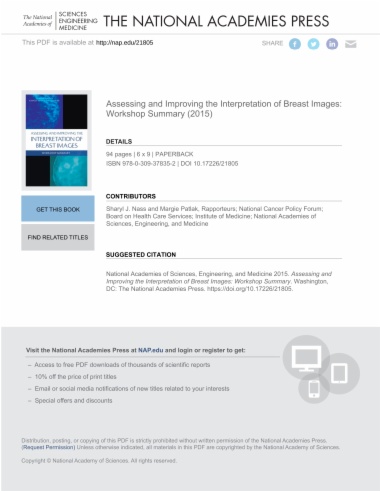

Millions of women undergo screening mammography regularly with the hope of detecting breast cancer at an earlier and more curable stage. But the ability of such screening to accurately detect early cancers depends on the quality of mammography, including high-quality image acquisition and interpretation. To help ensure the quality of mammography, Congress passed the Mammography Quality Standards Act (MQSA) in 1994 and last reauthorized it in 2004. In advance of its expected reauthorization in 2007, Congress requested a consensus study from the Institute of Medicine (IOM) recommending ways to improve the quality of mammography, with an emphasis on image interpretation. The resulting report, Improving Breast Imaging Quality Standards, highlighted the need to decrease variability in mammography interpretation in the United States and identified gaps in the evidence needed to develop best practices. The consensus committee found that mammography interpretation remained quite variable, and that this variability limited the full potential of mammography to reduce breast cancer mortality by detecting breast cancers at an early stage.
In May 2015, the IOM convened a workshop to address this issue. The participants discussed challenges in the delivery of high-quality mammography, the impact of training and experience on interpretive performance, how best to measure interpretive performance, and the potential impact of new technologies and supplemental imaging on interpretation of breast screening and diagnostic images. Assessing and Improving the Interpretation of Breast Images summarizes the presentations and discussions from this workshop.